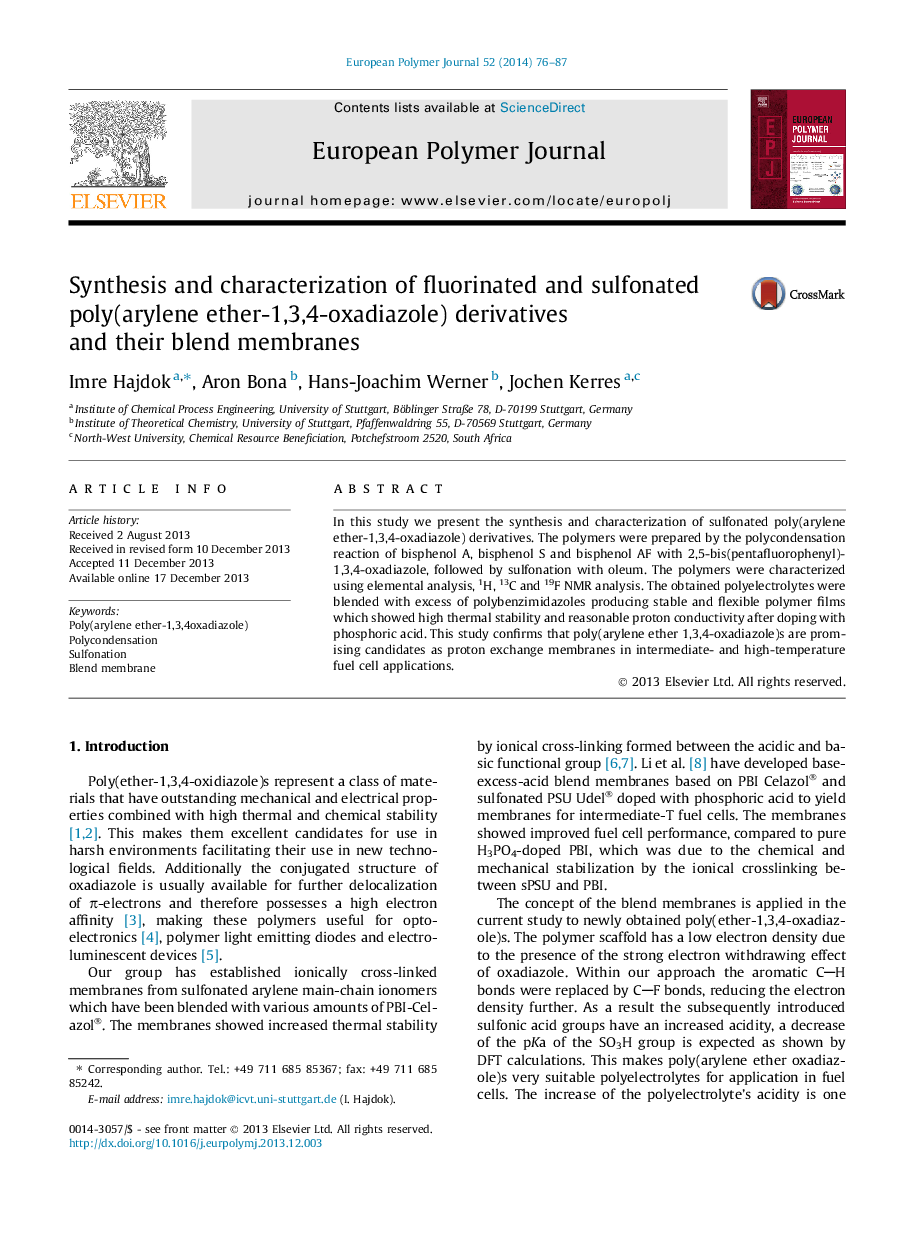| Article ID | Journal | Published Year | Pages | File Type |
|---|---|---|---|---|
| 1395674 | European Polymer Journal | 2014 | 12 Pages |
•Subsequently introduced sulfonic acid groups have an increased acidity in the polymers.•The sulfonated polymers are capable to serve as acidic component in blend membranes.•The thermal stability of all membranes showed decomposition temperatures above 400 °C.•Intermediate T blend membranes show a reasonable conductivity.
In this study we present the synthesis and characterization of sulfonated poly(arylene ether-1,3,4-oxadiazole) derivatives. The polymers were prepared by the polycondensation reaction of bisphenol A, bisphenol S and bisphenol AF with 2,5-bis(pentafluorophenyl)-1,3,4-oxadiazole, followed by sulfonation with oleum. The polymers were characterized using elemental analysis, 1H, 13C and 19F NMR analysis. The obtained polyelectrolytes were blended with excess of polybenzimidazoles producing stable and flexible polymer films which showed high thermal stability and reasonable proton conductivity after doping with phosphoric acid. This study confirms that poly(arylene ether 1,3,4-oxadiazole)s are promising candidates as proton exchange membranes in intermediate- and high-temperature fuel cell applications.
Graphical abstractIn this study we present the synthesis and characterization of sulfonated poly(arylene ether-1,3,4-oxadiazole) derivatives. The polymers were prepared by the polycondensation reaction of bisphenols followed by sulfonation. The obtained polyelectrolytes were blended with an excess of polybenzimidazoles. This produced stable and flexible polymer films, which were doped with phosphoric acid. The membranes showed high thermal stability and reasonable proton conductivity.Figure optionsDownload full-size imageDownload as PowerPoint slide
